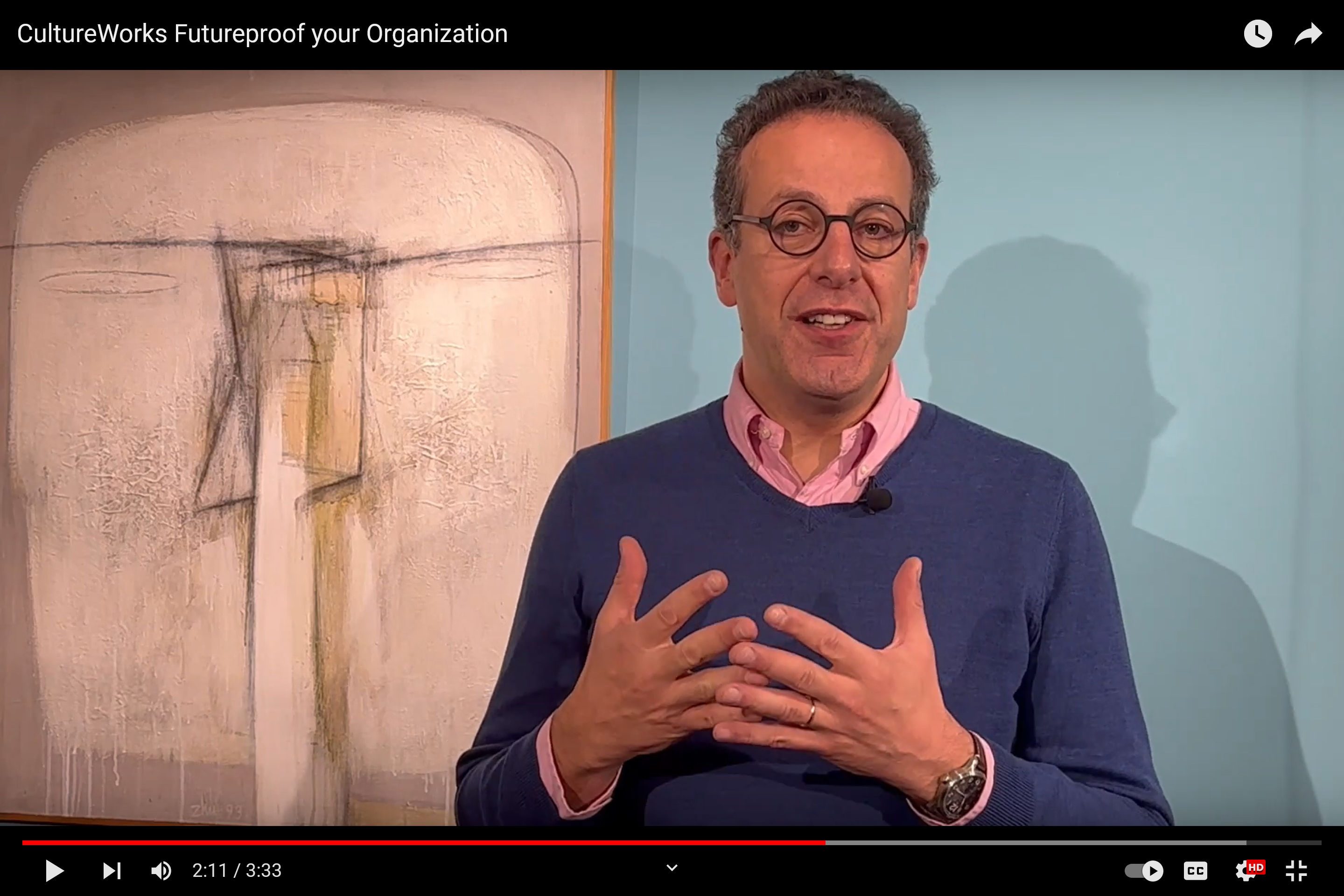The holiday season gave time to catch up with reading and reflect on the way we act. John Kotter, one of my inspirers in the field of change management and leadership, combined with my last and very enjoyable transformation project triggered my reflection about how we can build successful change for the better. I would like to share these thoughts with you.
In his last article “accelerate” (Harvard Business Review, Nov 2012) John Kotter updated his well-known eight-step method(i) to reach faster change. One could argue that he recycled his old stuff to sell more of the same. I find his 5 guiding principles of a dual-operating/change system truly of our time, mostly because managers and employees engage in their jobs in a different way than 15 years ago and because the business environment has become more turbulent and uncertain.
I would like to share with you the case study with a recent client of mine and explore how the particular culture of this organisation has forced us to adopt most of the dual-operating/change system.
Background info about this case: Over the 2nd semester of 2012, I helped a group of 55 public Flemish schools in Brussels to design & launch their 5-year transformation plan and to create its governance & monitoring tools to run it. My assignment was to bring management structure and the client team’s to bring pedagogic expertise.
The General Manager and the Board initiated this transformation with the vision of a better place to work, greater pedagogic quality, higher customer satisfaction, better alignment with the situation in Brussels and upper internal operations effectiveness, all within 5 years.
The organisation is significant in terms of size with more than 2.300 people employed over 71 sites, in terms of complexity with many different target groups (babies, students in compulsory general / technical education and adults) and activities (from small kindergarten to an industrial kitchen) and in terms of impact with more than 19.000 beneficiaries (pupils and students).
So, let’s go through Kotter’s 5 guiding principles of the dual-operating system:
- Two-systems, one organisation
Designing the transformation program resulted into 31 projects in most strategic fields of education (pedagogic quality, transitioning pre- to primary- to secondary school, languages, equal chances, schools branding, schools capacity, human resources, financial management and operational effectiveness) and phased over 5 years and all 55 schools.
It was not an option that this transformation program could disrupt the traditional “operating systems” made of the existing highly regulated hierarchy and processes. Continuity was a must so that schools continue to open, teachers to teach and students to learn.
Considering the high number of initiatives, the high level of decentralisation (each school manager is very independent) and the scarcity of human resources to run side projects, we had to set up a parallel agile & innovative “changing system” to design, implement and steer the program. This network-like organisation is mostly made of volunteering school managers organised in small project-teams, fully empowered on their topic. The coordination among projects happens through a new formal committee (the guiding coalition) and informal network.
This exhibit shows Kotter’s shifting theory from many change agents acting within the traditional hierarchy to its accelerated version of a network-like organisation, which we have mostly adopted.
This changing system leads to one major cultural modification, i.e. school directors will experience initiatives in their school led by volunteering outsiders. This is somewhat breaking the silo-behaviour and individualism.
- Many change agents, not just the usual few appointees
There were just too few usual suspects at headquarter to carry out the numerous new & transversal initiatives and they would lack comprehensive field connexions to steer the change. Our guiding coalition was therefore made of some of these usual suspects plus 15 school managers. All schools volunteering to one or several projects will identify change agents locally and per initiative.
This configuration spreads the strategic change effort to many volunteering hands-on people rather than few overloaded ones or new hires (not an option anyway).
- A want-to and a get-to, not just a have-to mind-set
Influencing is more common than commanding in this culture because public school system is regulated in a highly decentralised way, meaning that a school manager and a teacher can choose to a great extend the way they operate. In this respect, this organisation differs from many commercial companies with solid lines of command and the CEO at the top.
Considering the amount of resistance to the transformation plan, we had no other option than to rely on a want-to dynamic. We therefore held sessions where project managers would “sell” their projects to their colleagues and generate motivation to participate. Believe me, this is very awkward in a public school environment, but it actually worked !
- Head and heart, not just head
Motivating people in public schooling is different than in the private sector in terms of opportunities and constraints. For example the purpose of the job –teaching the young generations- is more directly inspiring than increasing sales or profit for companies which do not invest in a broader mission. But they have no financial incentive and very few factual measurement systems (e.g. Key Performance Indicators) to steer efforts. So using the heart can be easier and using the head can encounter some obstacles.
Nevertheless, we encountered challenges to generate positive emotional engagement towards the transformation and the efforts coming on top of the daily job. In order to have the people with us, we had put few recipes in place, such as:
- a strong, noble, enthusiasming and easy-to-communicate vision to each sub-project;
- measurements of employees & customers (students & parents) satisfaction next to hard-core transformation KPI’s.
- Much more leadership, not just more management
As already mentioned, the context of public schooling requires this principle; we needed to generate more commitment than compliance. Luckily, some dynamics have reinforced us in this direction, such as
- Spending a lot of time defining SMART objectives for each project so that everyone could easily understand its positive effects on his or her direct environment;
- The guiding coalition felt empowered because the highly respected General Manager had accepted to delegate;
- the laboratory strategy helps the teams to first prove the benefits of their initiatives with volunteering schools (= higher success rate) and then approach the others with hard facts on their success.

Now that the transformation plan has been launched mostly in line with these principles, the challenge will be to stick to them and even reinforce them along the 5 years. This requires leadership and perseverance.
Last but not least about these principles: they made my job as consultant and program manager far more enjoyable. The human dynamics were great during our progress because we have invested into emotional engagement, and not only into the traditional hard-core program management and its proven tools (PMO, KPI or governance).
This public organisation is now evolving to a “company” that is more fit for the future and I am proud that I have contributed to that!
Inspiring readings
Finally, I would like to recommend 2 great books about building shared-value. Both argue and even demonstrate that when shared-value is pursued, it increases the shareholder-value. These books have contributed to shape my business approach starting from the deeper purpose of my actions, to bring alignment and engagement.

The first one is « L’entreprise un moteur de progrès ? » (French Edition) by Jacques Van Rijckevorsel, Paris, May 2012. This book demonstrates that private companies are contributing to sustainable development of our society and our environment, but only under certain essential conditions. The author reviews the evolution of what is progress along the ages and its challenges.
The message I find the most striking is that companies driving progress adopt a certain attitude allying entrepreneurship, leadership and statesmanship.
Then, I have been impressed by the management book “Firms of Endearment: How World-Class Companies Profit from Passion and Purpose” by Rajendra S. Sisodia, David B. Wolfe & Jagdish N. Sheth, USA, 2007.
Its authors identified 28 “Firms of Endearment” (like Google, Ikea, J&J) and analysed their way of doing.
The summary says it better: “This book is about gaining “share of heart,” not just share of wallet. It’s about aligning stakeholders’ interests, not just juggling them. It’s about building companies that leave the world a better place. Most of all, it’s about why you must do all this, or risk being left in the dust… and how to get there from wherever you are now.”
Authors also compared their financial performance with “Good to Great” companies (Jim Collins, 2001) and the financial market. It is stunning! (See chart)
And if you feel like sharing your own experience, I am happy to meet and have a chat.
Kind regards,
Lionel
Lionel Frankfort
PS: Should you be interested and if you haven’t read it, do not hesitate to request my previous “thought-letter” on 5 success factors to business transformation (vision, focus, trust, alignment and measurement).





